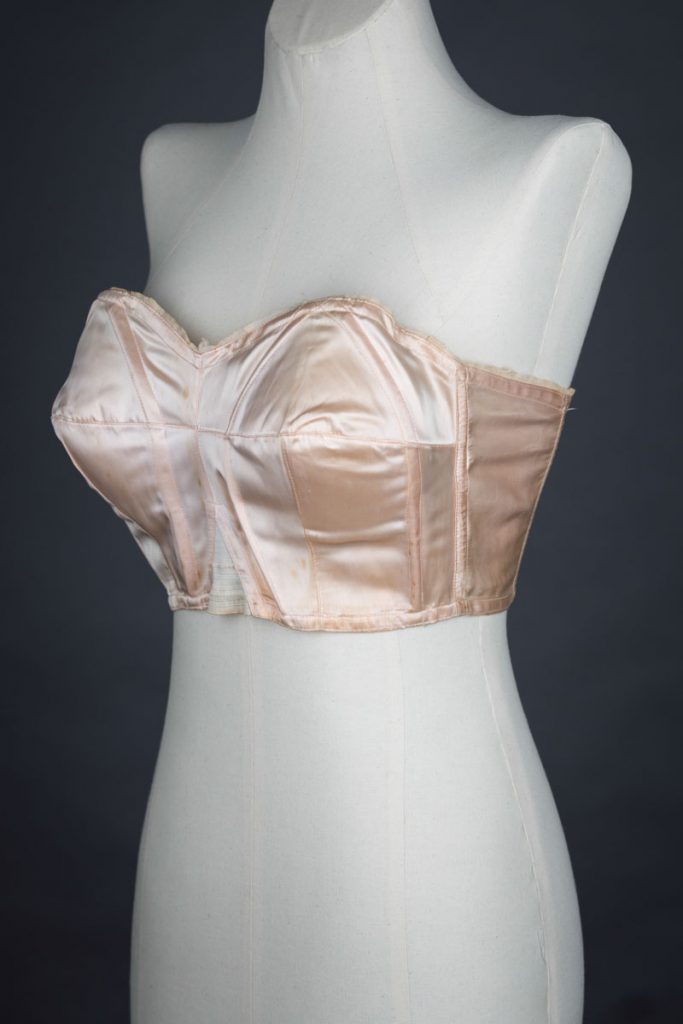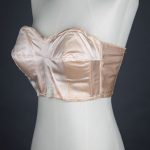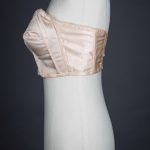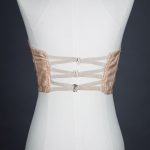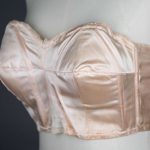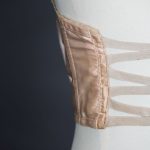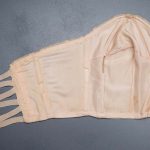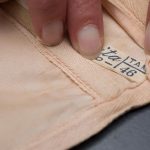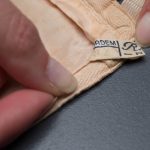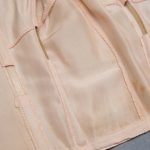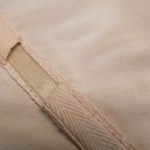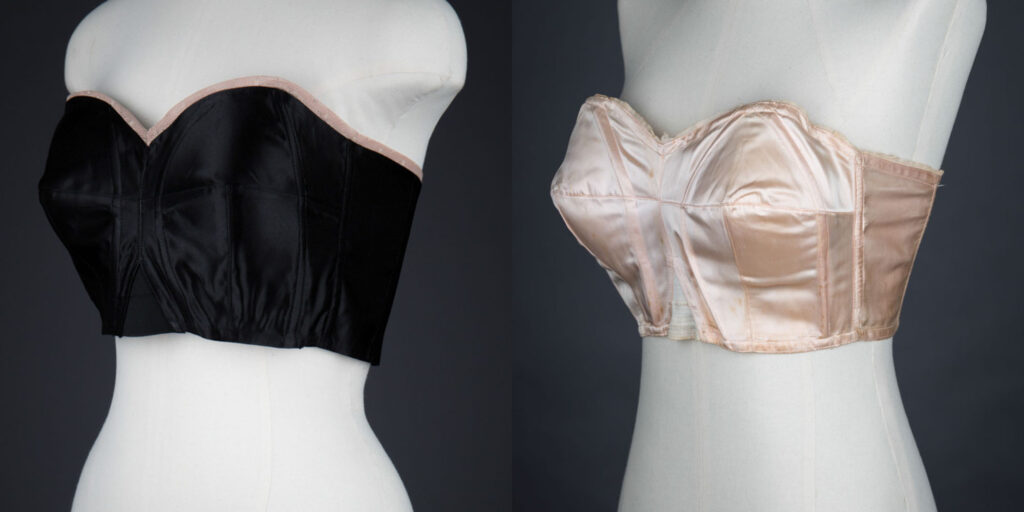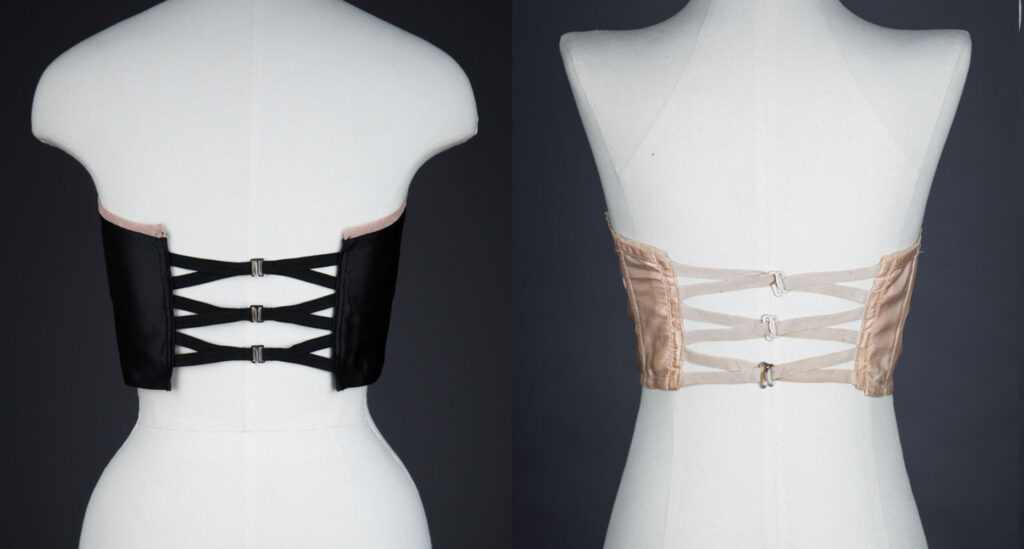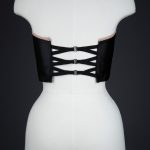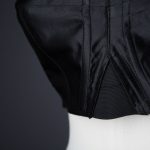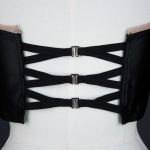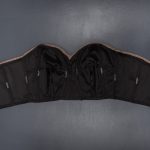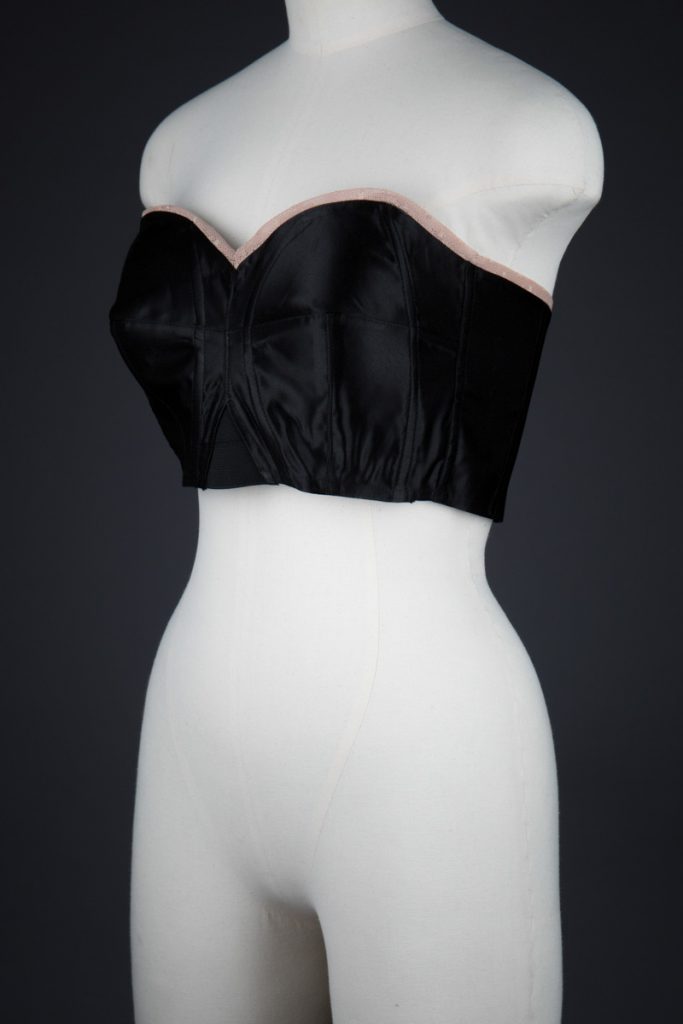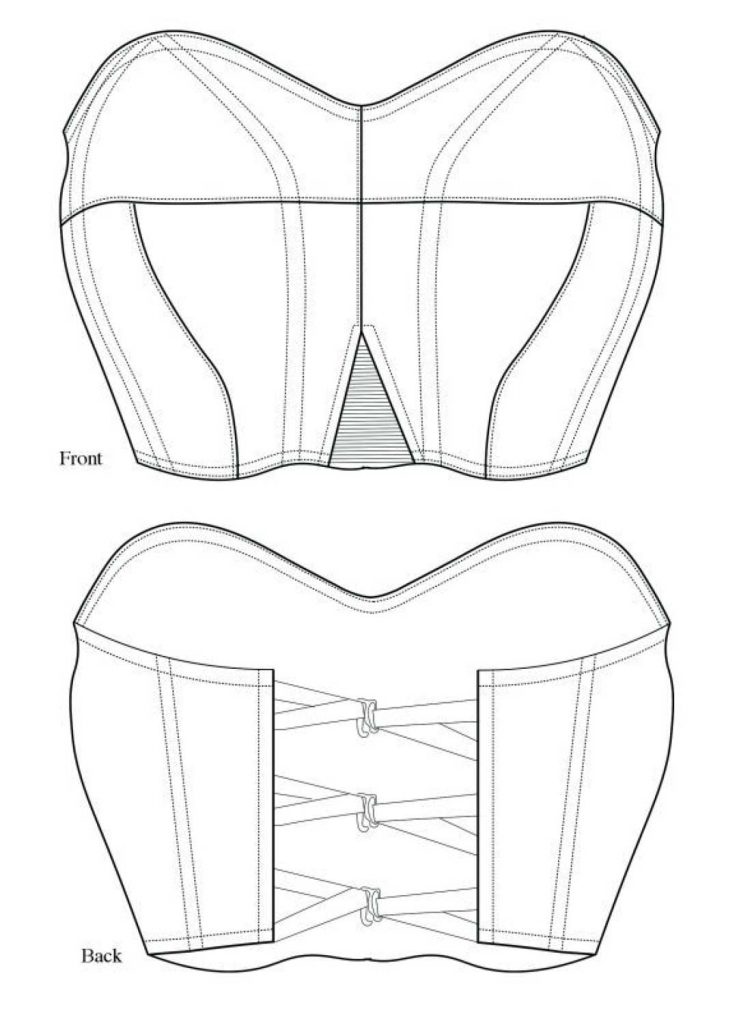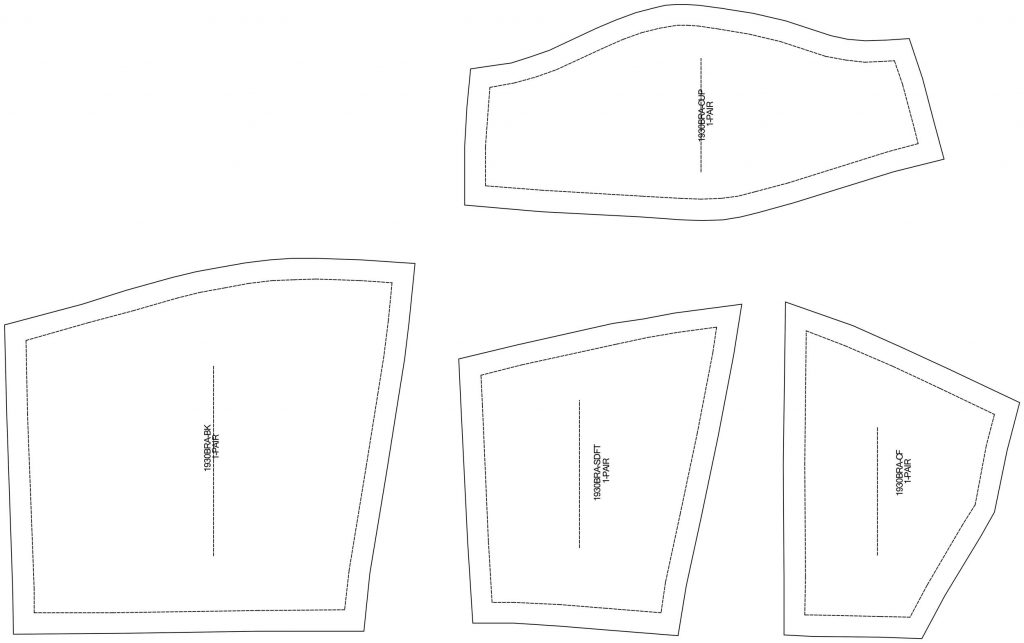Whilst this early rendition of the Cathedral bra style may not have the most complex of patterns, it still offered great challenges to Macarena Prada Leis in the stitching and material sourcing processes.
The original bra was boned with celluloid: an early form of plastic that faded from popularity in underwear after the 1930s, due to its instability (it is highly flammable) and brittleness, with most foundationwear designers opting for steel bones. Sourcing celluloid bones for this project simply wasn’t feasible, but fortunately modern material developments mean that there is now a greater range of much more stable plastic bones intended for clothing. ‘Rigilene’ plastic boning gives a similar level of support to the original celluloid boning, and can be seen in the open casings on the garment interior.
The heavy weight rayon satin that forms of the body of the bra was an incredibly common lingerie fabric when the garment was originally made. With advances in fibre technologies, this fabric has fallen almost entirely out of favour in contemporary design. Today’s lingerie industry favours the newer synthetic fibres of nylon and polyester over rayon, making it difficult to source an appropriate weave and weight of fabric to replicate the original bra.
The bra contains a number of challenging stitch operations: most notably the pointed elastic insert at the centre front with bias taped seam allowances, and the interrupted bone channels throughout the garment. Exceptional care, skill and time were required to execute these stitch operations so accurately; whilst such techniques may have been fairly commonplace in lingerie during the 1930s, they are rarely seen in contemporary clothing.
